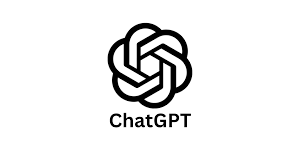The efficacy of ChatGPT largely depends on the underlying language model it is built upon. In this topic, we will delve into understanding how the language model works, focusing on concepts like prompts, responses, and fine-tuning. This will help you better leverage its capabilities and optimize its usage.
- Language Models
Language models are algorithms for generating human-like text. They are trained on a vast amount of text data and learn the statistical pattern of the language. This enables them to generate contextually appropriate text. The language model used by ChatGPT is a type of model called Transformer, more specifically, the GPT (Generative Pretrained Transformer) model developed by OpenAI.
These models read in text, encode it into a numeric form, and then use this numeric form to generate responses. They are able to generate contextually meaningful sentences because they’re trained on a massive amount of data, allowing them to learn things like grammar, facts about the world, and some level of reasoning.
- Prompts
In the context of language models, a prompt is the input text that the model uses as a starting point to generate a response. It’s the cue that you give to the model about what you want. The language model doesn’t know anything about the previous prompts and the responses it gave to them; it only generates a response based on the latest prompt.
Consider the language model as an extremely advanced text editor: you type something, and it suggests the next piece of text. For instance, you can prompt it with “Translate the following English text to French: ‘Hello, how are you?'”, and it should generate the correct French translation.
response = openai.ChatCompletion.create(
model="gpt-4.0-turbo",
messages=[
{"role": "system", "content": "You are a helpful assistant."},
{"role": "user", "content": "Translate the following English text to French: 'Hello, how are you?'"},
]
)
print(response['choices'][0]['message']['content'])- Responses
Once the language model is given a prompt, it generates a response. This is a sequence of tokens (words or parts of words) that the model predicts would logically follow the given prompt, based on the patterns it has learned during training. These tokens are then converted back into text to form the response.
The length and randomness of the response can be controlled by parameters like max_tokens and temperature. max_tokens limits the length of the generated output, and temperature controls the randomness (higher values make the output more random).
- Fine-Tuning
While the base language model is very powerful, it can be further optimized for specific tasks through a process called fine-tuning. Fine-tuning involves additional training on a specific dataset. The idea is to refine the patterns the model learned during its initial training, focusing on the patterns relevant to the specific task.
For example, if you’re building a customer service chatbot, you could fine-tune the language model on a dataset of customer service dialogues. This way, the model will learn the specific language, tone, and problem-solving skills needed for customer service tasks.
It’s important to note that fine-tuning requires machine learning expertise, as well as careful handling of the training data to avoid introducing biases or privacy issues. Moreover, as of my knowledge cutoff in September 2021, fine-tuning was only available for certain models and required special permission from OpenAI.
# This requires a custom training process, which is beyond the scope of this tutorial.In conclusion, understanding how the language model works is crucial to leveraging its
full potential. By learning about prompts, responses, and fine-tuning, you can better navigate using ChatGPT and optimize its functionality to suit your specific needs. As a tool, its potential is immense. Yet, as with any tool, it’s important to use it responsibly, understanding its strengths and limitations.












